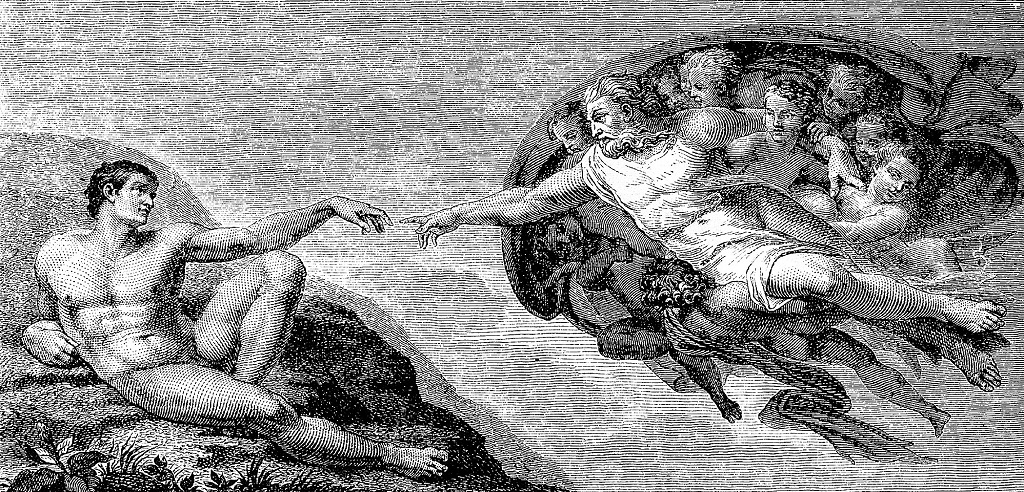God is the Ultimate Artist. He – unlike us – can create something out of nothing. And create He does! The natural world is filled with His glory: flowers, animals, mushrooms, sea creatures – we are surrounded by His delight in color, movement, textures. His sense of humor is evident too; all one has to do is watch kittens play or pandas roll in the snow to know that God finds humor in His creation as well.
Despite the fact that some folks think elephants can create works of art, humans really are the only creatures who can purposely create. Some of us create very useful things: we knit sweaters or build a house. Others are blessed with more artistic talents: painting and sculpting and great works of literature. But all human art first, is created out of “something” and second, is a reflection of God’s good creation.
In 1999, during his pontificate, St. John Paul II wrote a letter to artists. It is worth reading regardless of whether or not you are an artist. He tells us what the unique role of the artist is in human culture … and it’s an important one.
Society needs artists, just as it needs scientists, technicians, workers, professional people, witnesses of the faith, teachers, fathers and mothers, who ensure the growth of the person and the development of the community by means of that supreme art form which is “the art of education”. Within the vast cultural panorama of each nation, artists have their unique place. Obedient to their inspiration in creating works both worthwhile and beautiful, they not only enrich the cultural heritage of each nation and of all humanity, but they also render an exceptional social service in favour of the common good.
The particular vocation of individual artists decides the arena in which they serve and points as well to the tasks they must assume, the hard work they must endure and the responsibility they must accept. Artists who are conscious of all this know too that they must labour without allowing themselves to be driven by the search for empty glory or the craving for cheap popularity, and still less by the calculation of some possible profit for themselves. There is therefore an ethic, even a “spirituality” of artistic service, which contributes in its way to the life and renewal of a people. It is precisely this to which Cyprian Norwid seems to allude in declaring that “beauty is to enthuse us for work, and work is to raise us up”. [emphasis added]
St. John Paul II also reminds us that the gift within each artist comes from God:
Dear artists, you well know that there are many impulses which, either from within or from without, can inspire your talent. Every genuine inspiration, however, contains some tremor of that “breath” with which the Creator Spirit suffused the work of creation from the very beginning. Overseeing the mysterious laws governing the universe, the divine breath of the Creator Spirit reaches out to human genius and stirs its creative power. He touches it with a kind of inner illumination which brings together the sense of the good and the beautiful, and he awakens energies of mind and heart which enable it to conceive an idea and give it form in a work of art. It is right then to speak, even if only analogically, of “moments of grace”, because the human being is able to experience in some way the Absolute who is utterly beyond.
Even if we are not schooled in great art or literature, we know when we are in its presence. It creates a sense of awe and wonder. It deepens our understanding of ourselves, the world, of God. Art creates “moments of grace.”
Here is one such moment of grace. Enjoy the beauty of “Kinetic Rain,” an art installation at the Changi Airport in Singapore.

